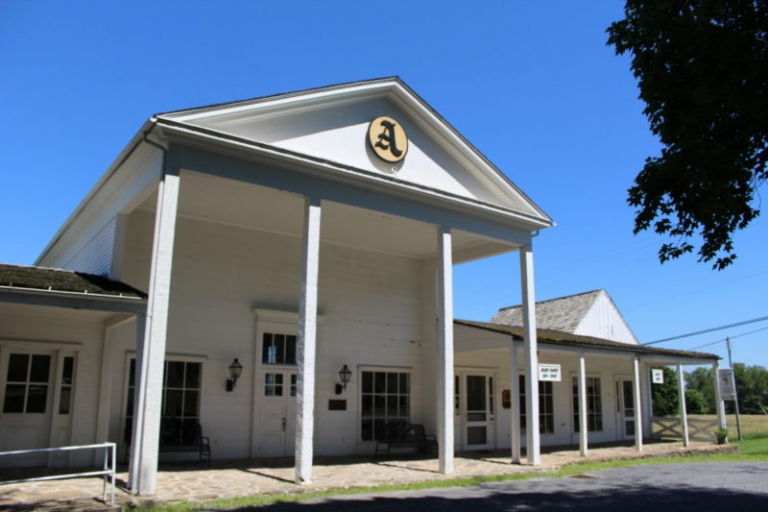
The Kingwood Pike climbs slowly from the valley of the Monongahela River at Morgantown into the Allegheny highlands atop the Chestnut Ridge, and from there travelers are provided eastward vantages across the open farmlands of Preston County, long renowned as the heart of West Virginia's Buckwheat Belt.
To the southeast of the crest, beyond a patchwork of pastures, the informed observer may descry a wooded dale above which rise the roofs of many small houses. The distance is too great to observe much detail, and, with the exception of its beauty, the village might appear normal, though it is hardly so.
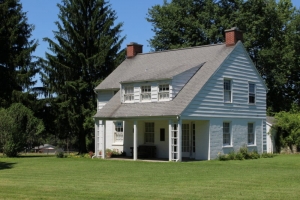
This is Arthurdale, where architecturally distinct cottages, alphabetically designated avenues, elaborate community buildings all hint at a strange history that comes slowly into focus as the traveler investigates.
Arthurdale was a social experiment — largely the brainchild of first-lady Eleanor Roosevelt, who had been inspired by beneficent Quakers nearby in Pennsylvania. Her goal was to create a sustainable, largely agricultural community.
Though more than a score of such institutions appeared through the decade, this, founded in 1934, was the first "New Deal" community and was reputedly a favorite of the first lady. It was often referred to as "Eleanor's Little Village."
On my last visit, Jeanne Goodman, the executive director of Arthurdale Heritage Inc., which has helped restore village's public buildings, referred me to correspondence the Roosevelt maintained with residents.
"She visited many times and took an active role in development here," Goodman said, directing me toward the community archives. "We have copies of many of the letters she continued to write to people with whom she maintained friendships."
Roosevelt's goal, as was her husband's, was to help rescue victims of the Great Depression and to provide social models for a United States in need of economic restructuring. Most such communities in West Virginia depended significantly on an agricultural component and a cooperative manufacturing initiative.
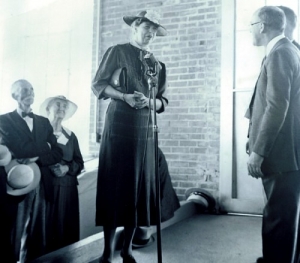
Similar experiments were established in West Virginia along the Kanawha River at Eleanor and in the Allegheny Mountains at Valley Bend, near Huttonsville — the latter of which included a timber-industry component. Also nearby, Greenbelt, Md., was designed as a cooperative gardening suburb, and Aberdeen Gardens, Va., was built exclusively for resettled black workers from Hampton and Newport News.
The purpose of Arthurdale was to provide a better life for impoverished families who had been living in the coalfields near Morgantown, most specifically for those from Scott's Run. The press had promoted images of shacks along the run as examples of the worst of Depression-era poverty in industrialized Appalachia.
Residents of Scott's Run and other communities nearby were selected for residence at Arthurdale based on their economic situations and their propensity to participate in a cooperative setting. The homesteaders, as they came to be known, had agreed to farm an allotted acreage, and many were employed providing services in the village and through its Mountaineer Craftsmen's Association, which had been incorporated to produce distinctive hand made textiles and metalwork.
Many were hired to work in business ventures that had been enticed to the area, and in 1936 the association established a vacuum cleaner factory.
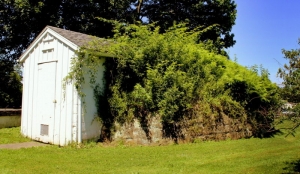
Within a decade, if not before, it became apparent that the experiment did not work. Goodman points to the village's poor location -- 15 miles from transportation centers at Morgantown -- and the inability of artisans to compete with mass produced equivalents. The valley at Arthurdale was also infamous for hard winters and short growing seasons.
Historian Steven Haid stated that the cooperatives "were poorly conceived, poorly managed, and…poorly operated." In 1947, the government liquidated its holdings in Arthurdale, and its homes and community buildings were sold.
Though financially unsuccessful, Goodman points out that the programs did provide employment at a time when it was most needed and helped homesteaders hone skills they used after the crafts industry at Arthurdale disassembled.
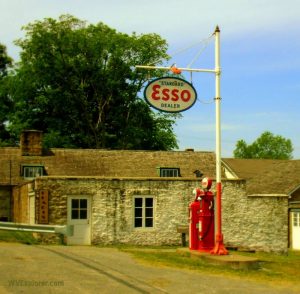
My first memorable encounter with Arthurdale was in 1984, the year the community celebrated its 50th anniversary. It was also my second year as an enthusiastic young historian at West Virginia University in Morgantown, and the anniversary celebration that summer inspired many former residents and university officials, including several of my professors, to establish Arthurdale Heritage, Inc., which began to restore and interpret the site.
The village is now registered as a national historic district that includes 160 of the 165 original homes. The New Deal Homestead Museum has been established around the Center Hall and includes the forge, a crafts shop, restored service station,administration building, and a restored Arthurdale homestead. Its craft shop specializes in Appalachian crafts and quality gifts.
More than 2,000 travelers visit the village annually, though many more travel through without registering at the museum. Guests are welcome to wander on foot or by car or bike, though a fee of no more than $10 has been set for admission to the museum and the restored house. For plentiful information on the village and admission hours and fees, visit ArthurdaleHeritage.org.
Among several alternate ways to reach Arthurdale, my favorite trek, as described in the introduction above, follows the Kingwood Pike (CR-81) from downtown Morgantown.
See also:

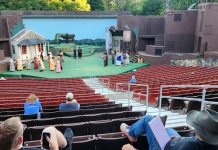
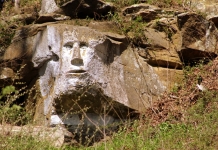


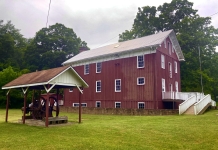
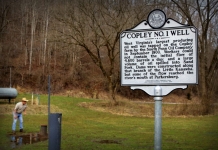
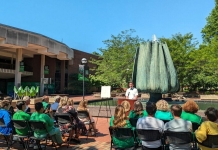


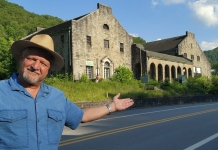


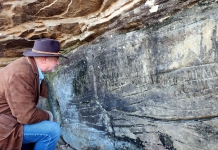

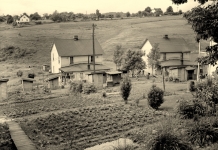
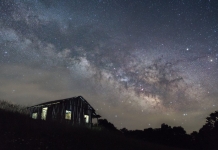






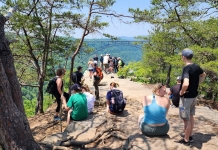





Facebook Comments